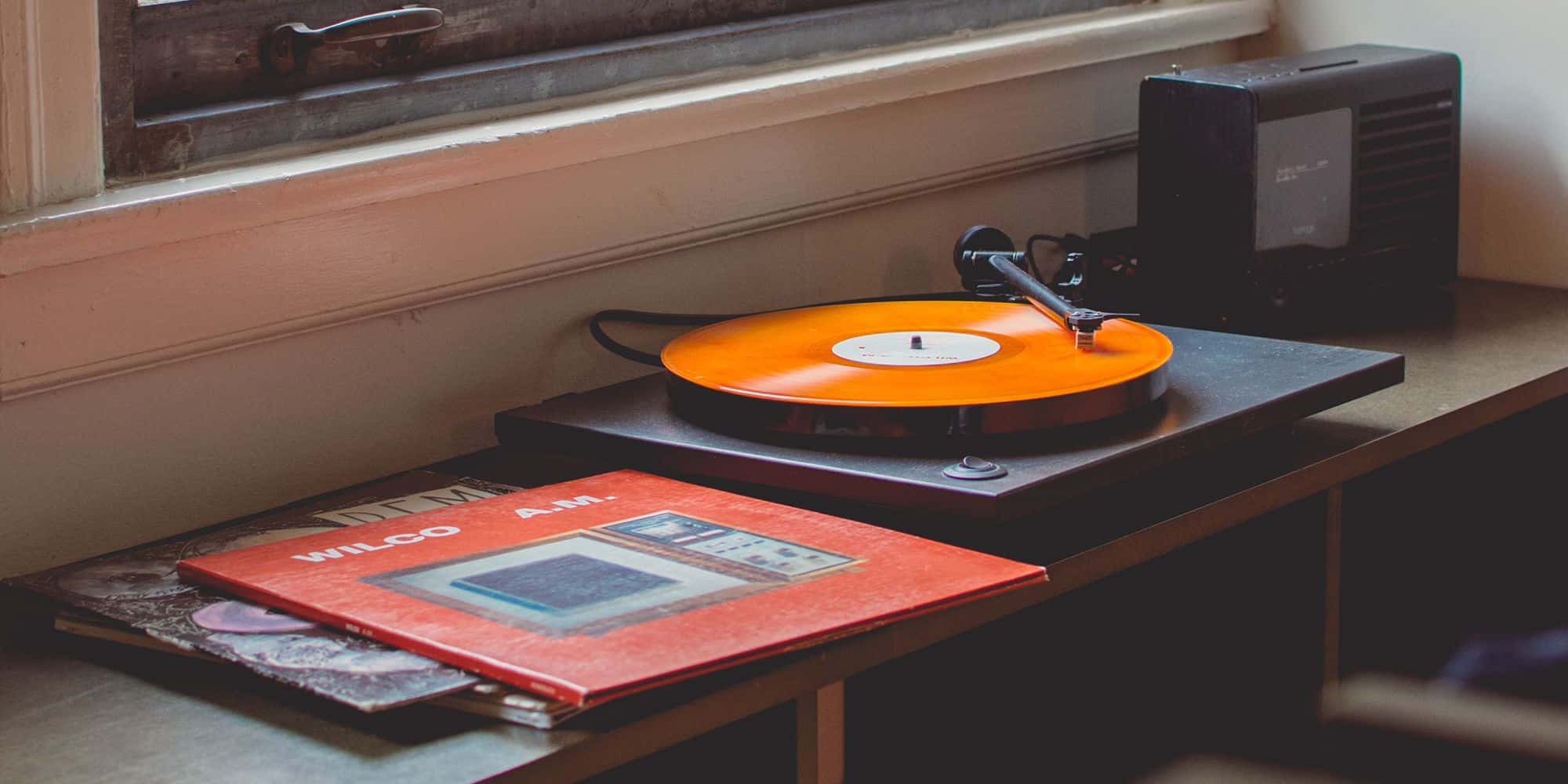Some of my earliest memories of listening to music were of vinyl played on record decks around three decades ago. Jimi Hendrix, Led Zeppelin, Pink Floyd, Cream, the origins of my love of music.
The lovely crackle of the audio before the song begins, the giant headphones with the curly wire and huge plug, the massive four-foot stereo speakers booming in the corners of the room.
But I also remember getting in quite a lot of trouble for scratching an original pressing of Morrison Hotel by The Doors when I hastily tried to change the track by moving the needle – now that’s something you’ll want to avoid at all costs, believe me!
Anyway, fond memories aside; whether you’re completely new to the world of vinyl and turntables, or an old veteran looking to dust off your collection, this turntable buying guide will help you find the best piece of kit to suit your taste for that unique sound only vinyl can reproduce. And how NOT to ruin one of your parent’s prized possessions…
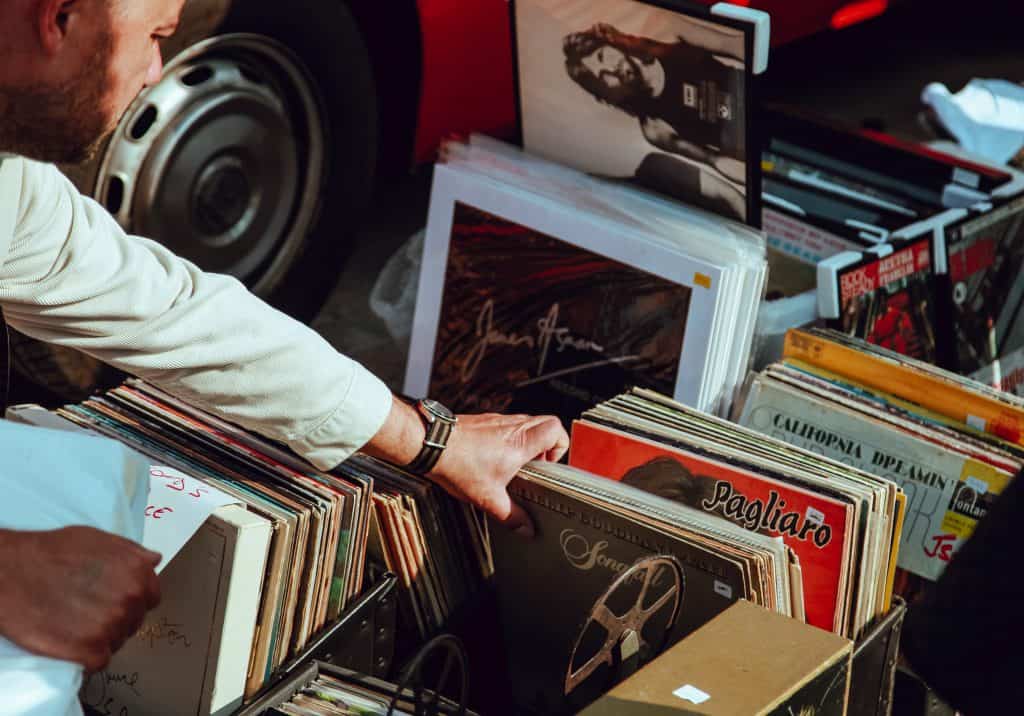
Where to begin?
Let’s start with the basics and a little history lesson.
In short, a record has tiny little grooves in it, called the “tracks”, and as the turntable spins, the “stylus” (a.k.a. needle), reads the information on the record and translates it into a sound signal which are sent to your speakers. Isn’t technology amazing?

The first record player was invented in way back in 1877 by Thomas Edison. Technically speaking, this was a “phonograph”, which took cylinders instead of the flat disks we see in turntables today. Alexander Graham Bell invented the “gramophone”, that flat disks began to take over.
I’ll not get too technical, but these days it’s all achieved with the magic of magnets. Here is a link if you’d like to know more.
A soft touch… or an automatic turntable
But if you ever get a hold of an old turntable, don’t ever try to play a modern vinyl on it or you will just end up doing what I did to The Doors or worse!
The utmost care and a very delicate touch need to be used every time you play one of your records if you want to preserve them. If you don’t even know what I’m talking about, then you definitely aren’t ready to cue a record by yourself. Make sure you spend some time to learn how to drop a needle on a record first.
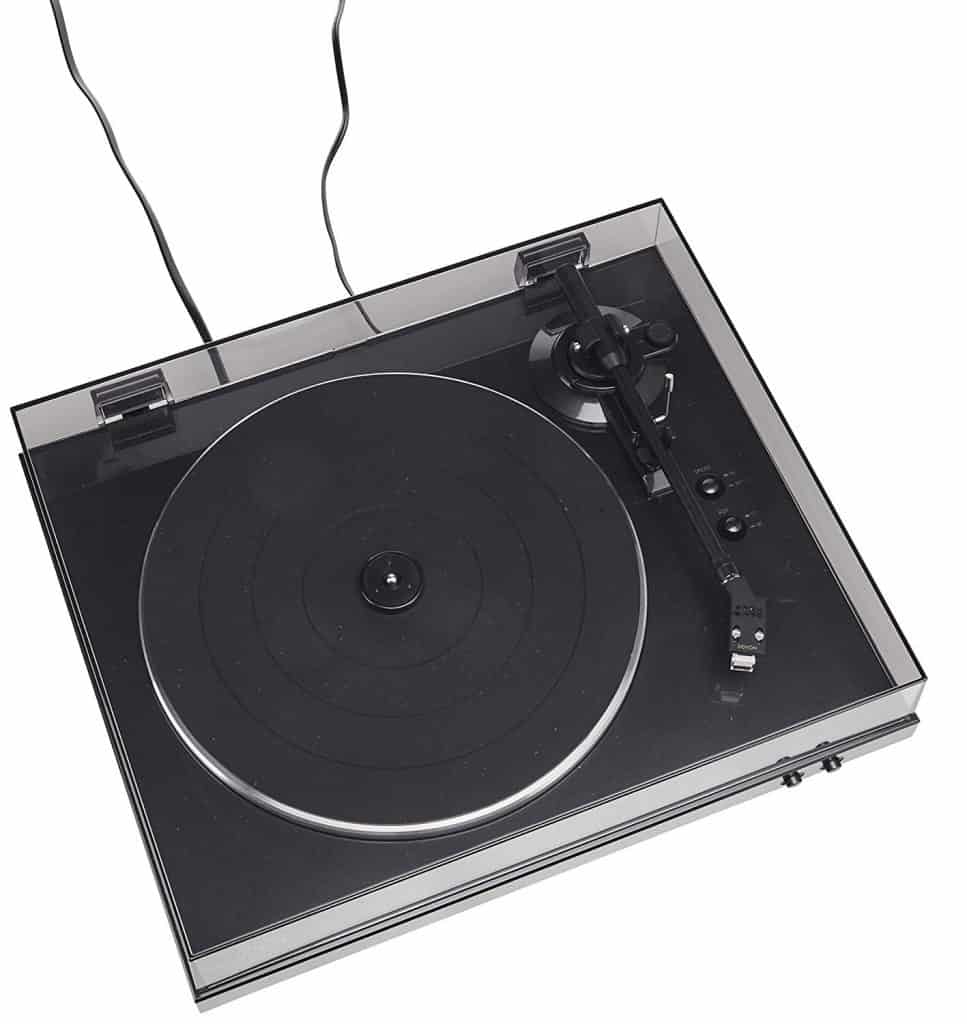
Luckily, many modern turntables come with automatic “tonearms” that place the stylus in the groove for you without the need for a steady hand. Obviously, I learned that the hard way, and I’ll never forget it! If only my parent’s deck had an automatic tonearm…
However, because the deliberate action of manually cueing a record is part of the vinyl experience, manual turntables are still sold. More popular nowadays are semi-automatic turntables, which let you drop the needle, but returns the tonearm to its resting position after playback. You get to enjoy the kinaesthetic pleasure without worrying about cleanup, basically.
Stay away from briefcases
There are a lot of options out there when it comes to buying a turntable. It can be a little daunting at first. So, let’s have a look at what you can get for your money.
Firstly, there are a lot of gimmicky “briefcase-style” players out there, which are cheap and basic as their price. Many feature built-in speakers (yuk!), though you will likely also have the option to hook them up to separate speakers.
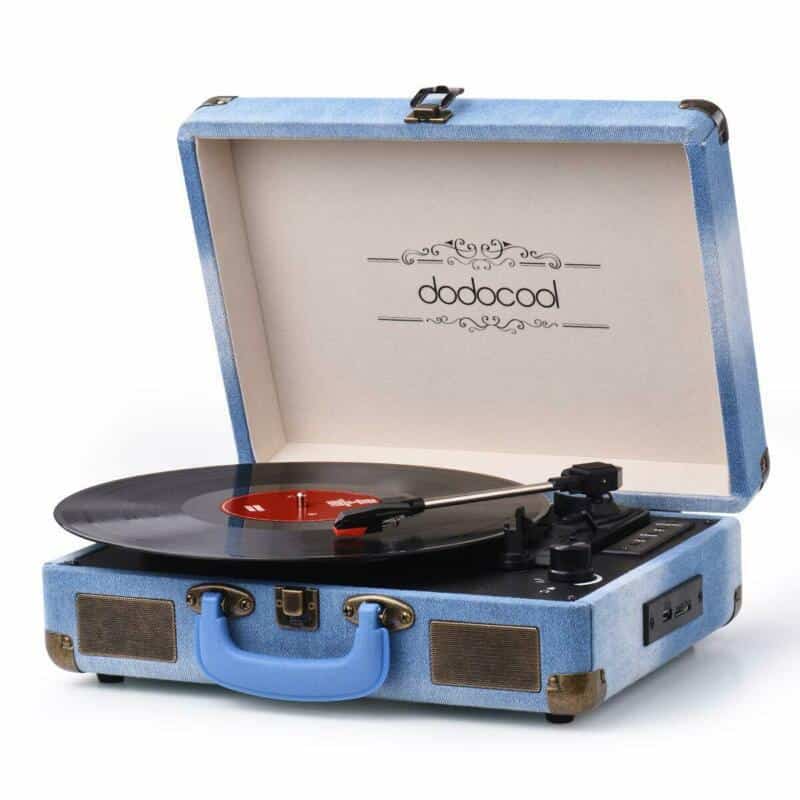
You should avoid these sorts of turntable if you are serious about listening to vinyl. They have poor sound quality, and can quickly ruin your precious vinyl collection. How? Well, they lack adjustable counterweights and instead have a chunky piece of plastic which gives them a heavy tracking weight. This extra weight will quickly grind down any record you feed it.
So, let’s talk about a proper set-up, shall we?
The enormous wood-panelled system my parents had when I was a boy would be totally archaic by today’s standards. It comprised of a Technics turntable, a Technics amplifier with graphic equalizer, and a tape deck. Those big old speakers I mentioned earlier were Celestion Dittons with tweeters, woofers and bass. Oh, and a LOT of cable spaghetti…
Let’s modernize that…
You can quite easily play your records with nothing but a turntable and a pair of active speakers these days, which, thanks to decades of technological progress, and a certain Viking lending his name to a widely used high frequency radio signal (Bluetooth), can even be done wirelessly and almost effortlessly! And it won’t cost nearly as much as some of the more elaborate systems out there. The setup would consist of:
- A turntable
- A pair of active speakers
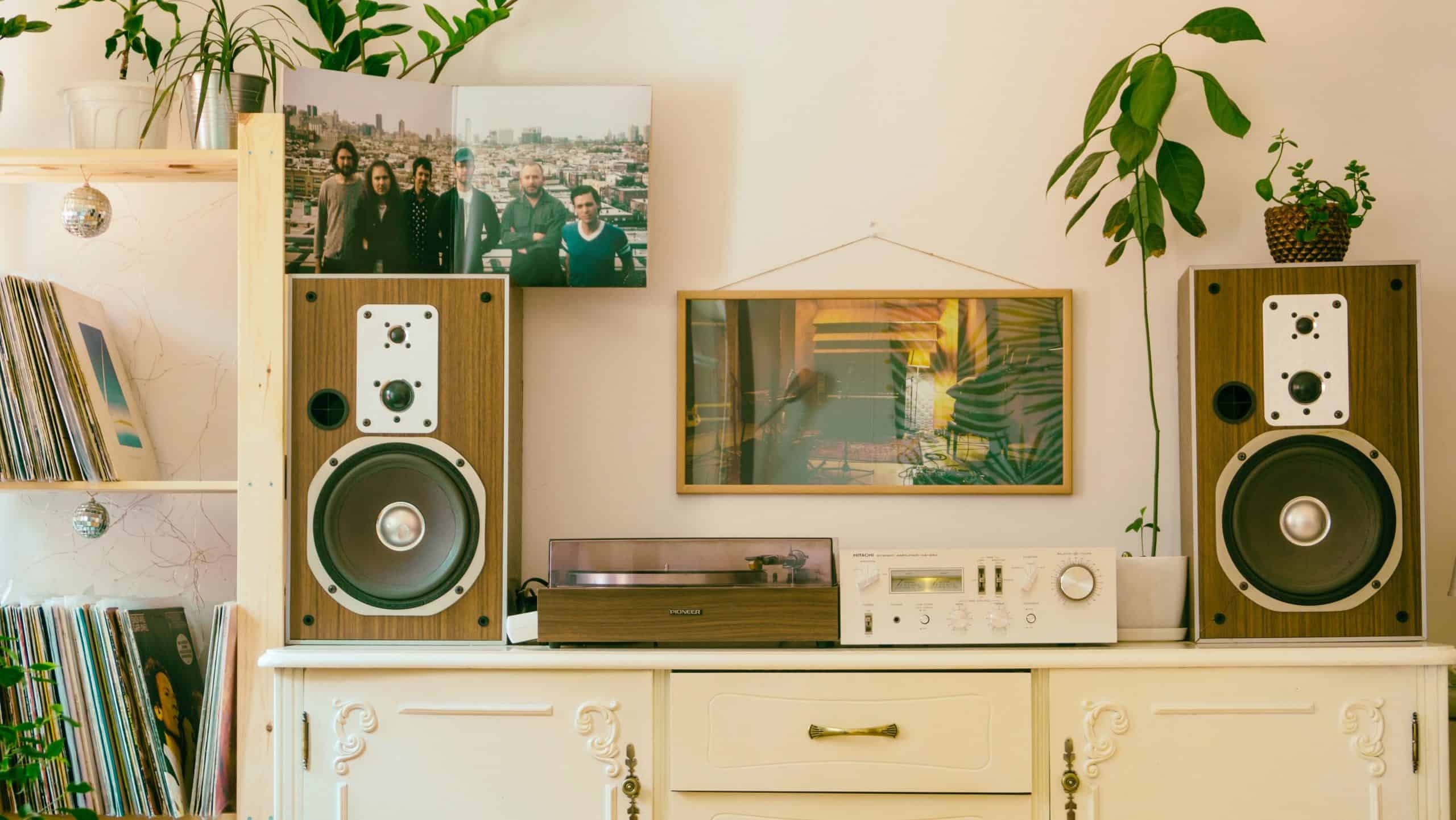
However, my preference involves a receiver and passive speakers, which is the bread and butter of a traditional HiFi system.
- A turntable
- A pair of passive speakers
- An amplifier/receiver to power the passive speakers
New or Second Hand?
If you’re feeling thrifty, buying second-hand turntables is always a good option. But you will want to make sure that it’s in good working order. Just like if you’re buying a used car. A later section of this article, “What do I need to know about turntables to buy one?”, will help you with that.
However, if you’re just starting out, I’d recommend purchasing new, despite what a lot of people say. Buying a new turntable will make sure you get a system that is functioning properly and give you a good reference to compare any second-hand players against in the future.
Here are some good new buying options at various budgets:
Additional things you need (or might need) to buy
Other than the turntable itself, you’ll need some other things to complete your setup:
Phono Stage/Phono Preamp – Might need
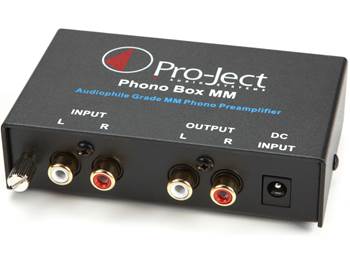
A “phono stage” (a.k.a. phono preamp) is needed to make sure a strong enough sound signal goes to your standard AUX input on your stereo. At the same time, it adds standardized equalization, which long story short, makes things sound better.
Many modern turntables come with one built in, but if the one you have your eye on doesn’t, a good phono stage must be bought.
Speakers – Need
Speakers are very much a personal preference. As with the other extras I have talked about here, speakers are down to your budget and what sort of sound you’re trying to achieve. They come in a mind-boggling array of shapes and sizes.
The most commonly picked type are bookshelf speakers. These types of speaker are perfect for homes because they’re relatively compact and can be placed virtually anywhere – on a desk, on a stand, or mounted to the walls. Of course, within the category of bookshelf speakers lie hundreds of models, each with different sound characteristics.
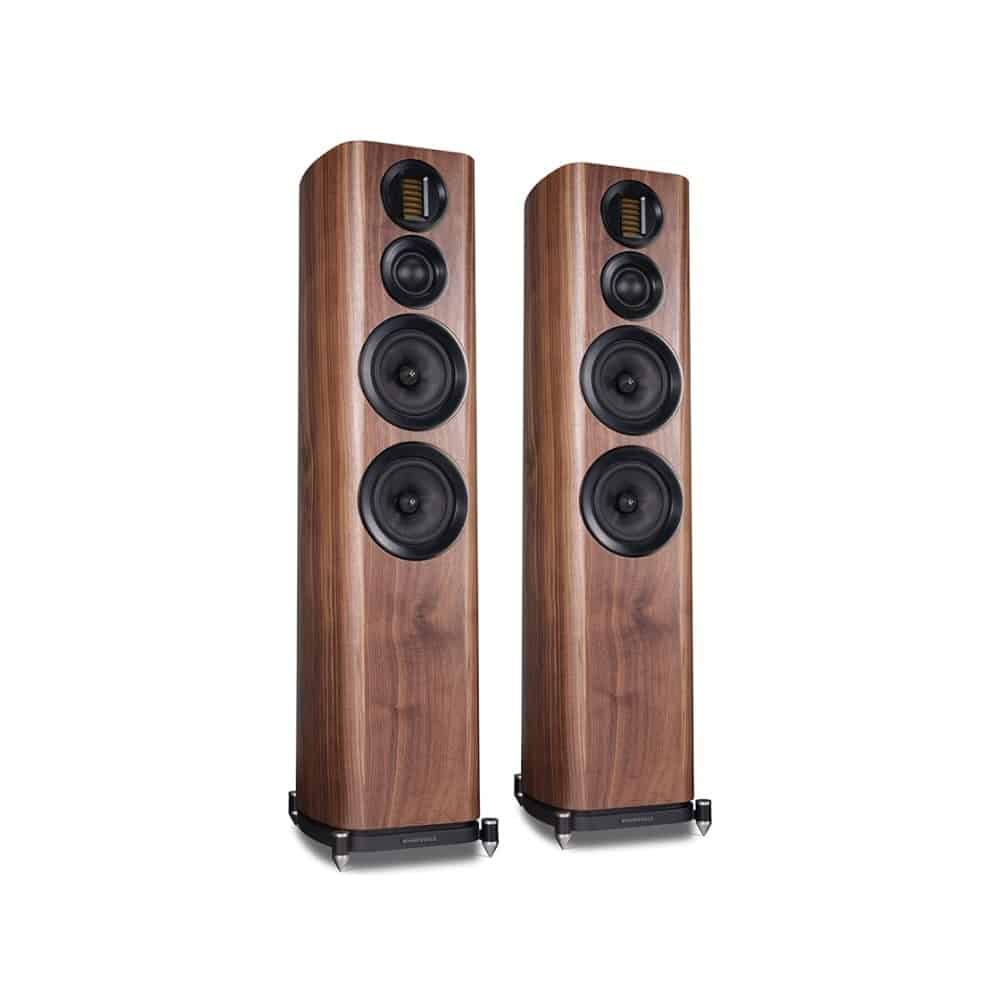
The other common type are floorstanding speakers, sometimes called tower speakers. These are bigger and generally more powerful than bookshelf speakers. They’ll take up more room and cost you more money, but have the ability to fill even the largest of rooms.
The other choice to make is between active and passive. Active speakers feature a built-in amp, whereas passive speakers need one to be purchased separately, which brings us to…
Stereo Amplifer/Receiver – Might need
Amplifiers (and receivers) do exactly what they sound like they do: they make things louder! They amplify your sound! If you’re using passive speakers, you’ll need to make sure you have an amplifier in between the speakers and the record player. By definition, passive speakers need to be powered by an amp.
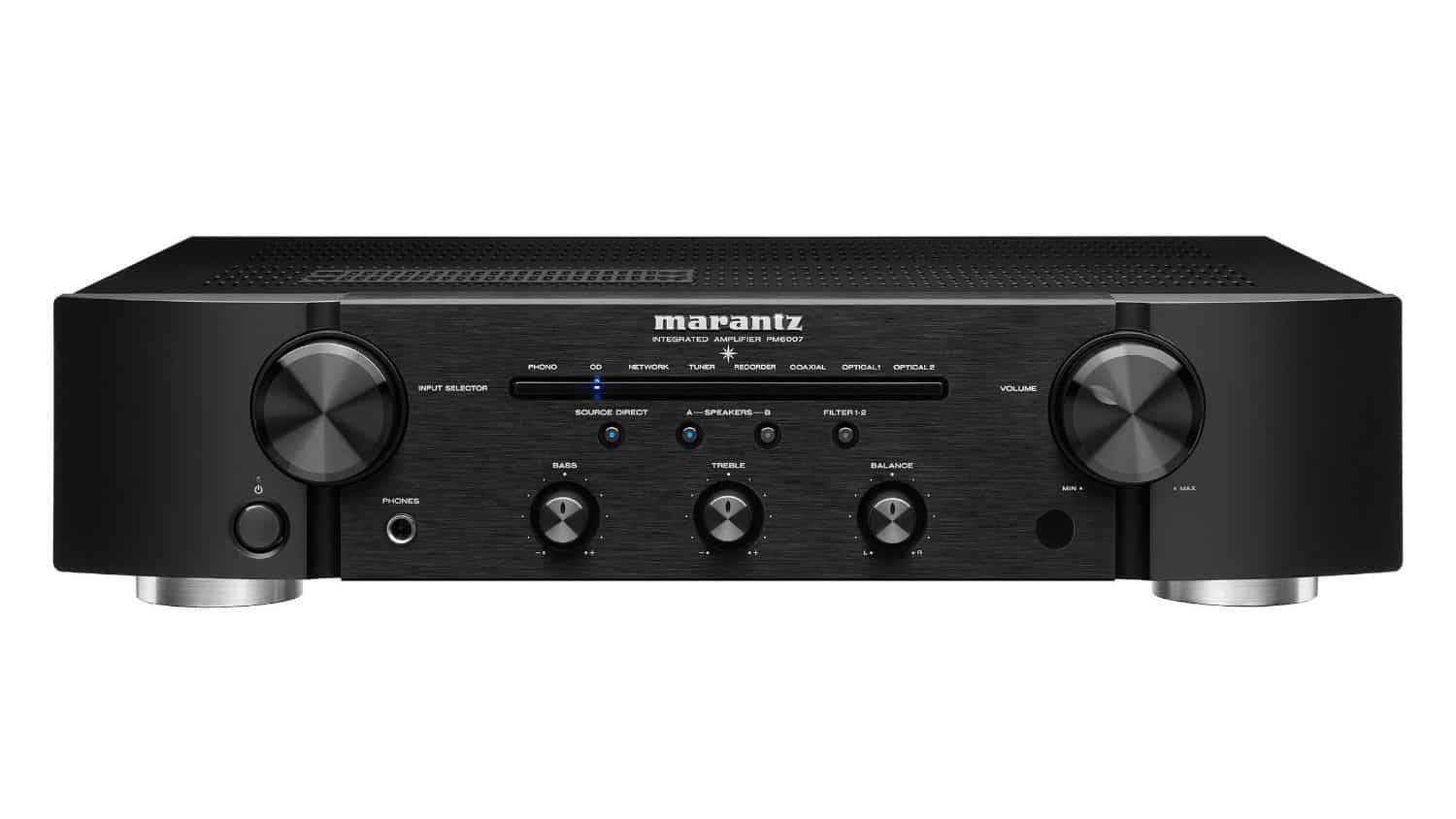
Amplifiers also give you access to more audio fine-tuning. When I play my electric guitar, my amplifier gives me a wide range of tone and effects. I can modify the bass, treble and mid-range outputs of my sound. I can whisper quietly “While My Guitar Gently Weeps”, make the windows shake or even “Crack the Skye”, if I’m in the mood. You can do that with your vinyl too, with a decent amplifier.
Now if you’re using active speakers, you won’t need an amp. These kinds of speaker are plugged directly into a power outlet and have an amp built-in. You’ll be able to hook your turntable up straight to them.
The reason audiophiles generally go for a more complex system involving an amplifier is that it makes their setup more versatile. A modern amp can be hooked up to several audio sources (e.g. TV, turntable, computer) and might even have Bluetooth built-in. And if you want to improve sound quality with a new pair of speakers, you can still use the same amp (in most cases).
A Subwoofer – Don’t need, but nice to have
A sub (not the type of sandwich!) can be nice to have, but definitely isn’t essential, and you should focus on getting the best speakers for your money instead.

Any decent bookshelf or floorstanding speakers will be able to reproduce lower bass frequencies with sufficient kick. That being said, having a subwoofer can definitely further enhance the auditory experience, so consider adding one at some pont in the future.
The next section will deal with the turntable itself…
What do I need to know about turntables to buy one?
Here, I’m going to give you a quick rundown of the inner workings and the terminology of what’s inside record players to help you in your search.
Platter and Mat
The “platter” is where you will (delicately) place your record. You will also want a good “mat” on top of the platter to stop your record from slipping, if one wasn’t supplied with the turntable. Not to sound like a broken record, but – The Doors fiasco…
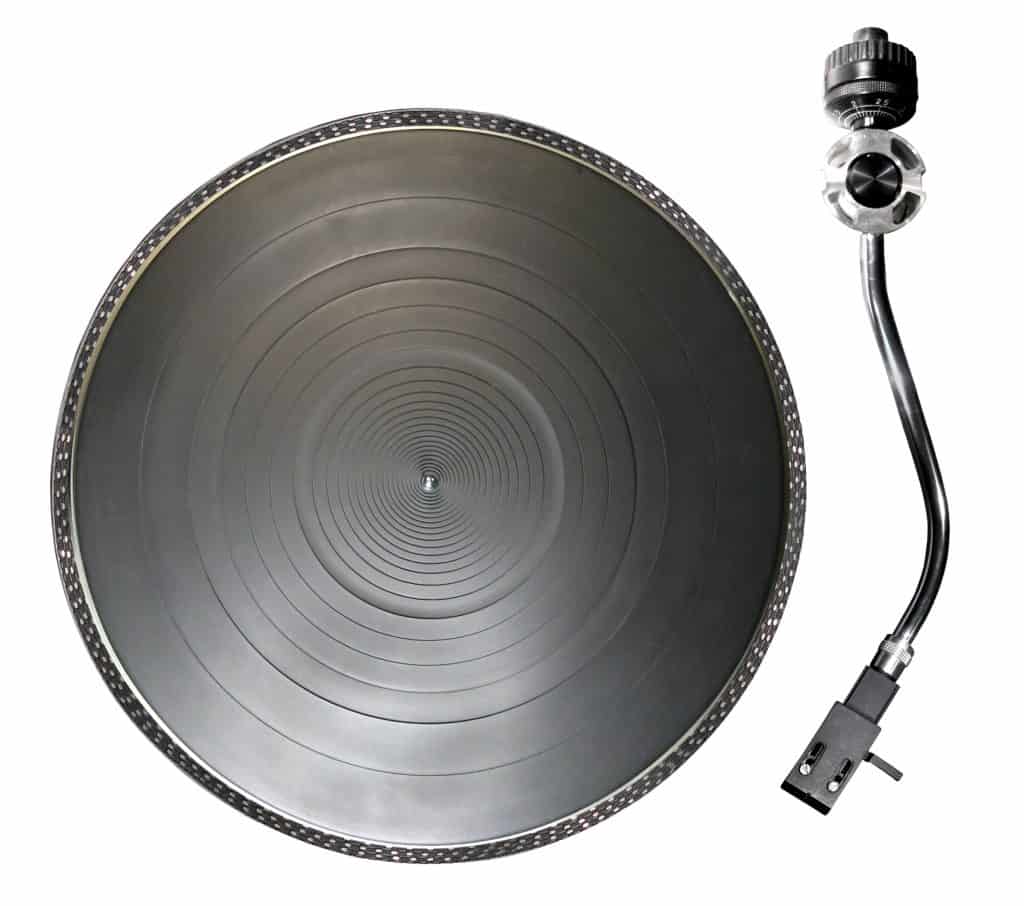
Tonearm, Cartridge and Needle
The “tonearm” houses the “cartridge” at its tip, and the cartridge houses the “stylus”, or needle. This is where the magnetic magic happens!
Your record player will be fitted with a cartridge out of the box, so there’s no need to shop for one, unless it breaks or you want to upgrade.
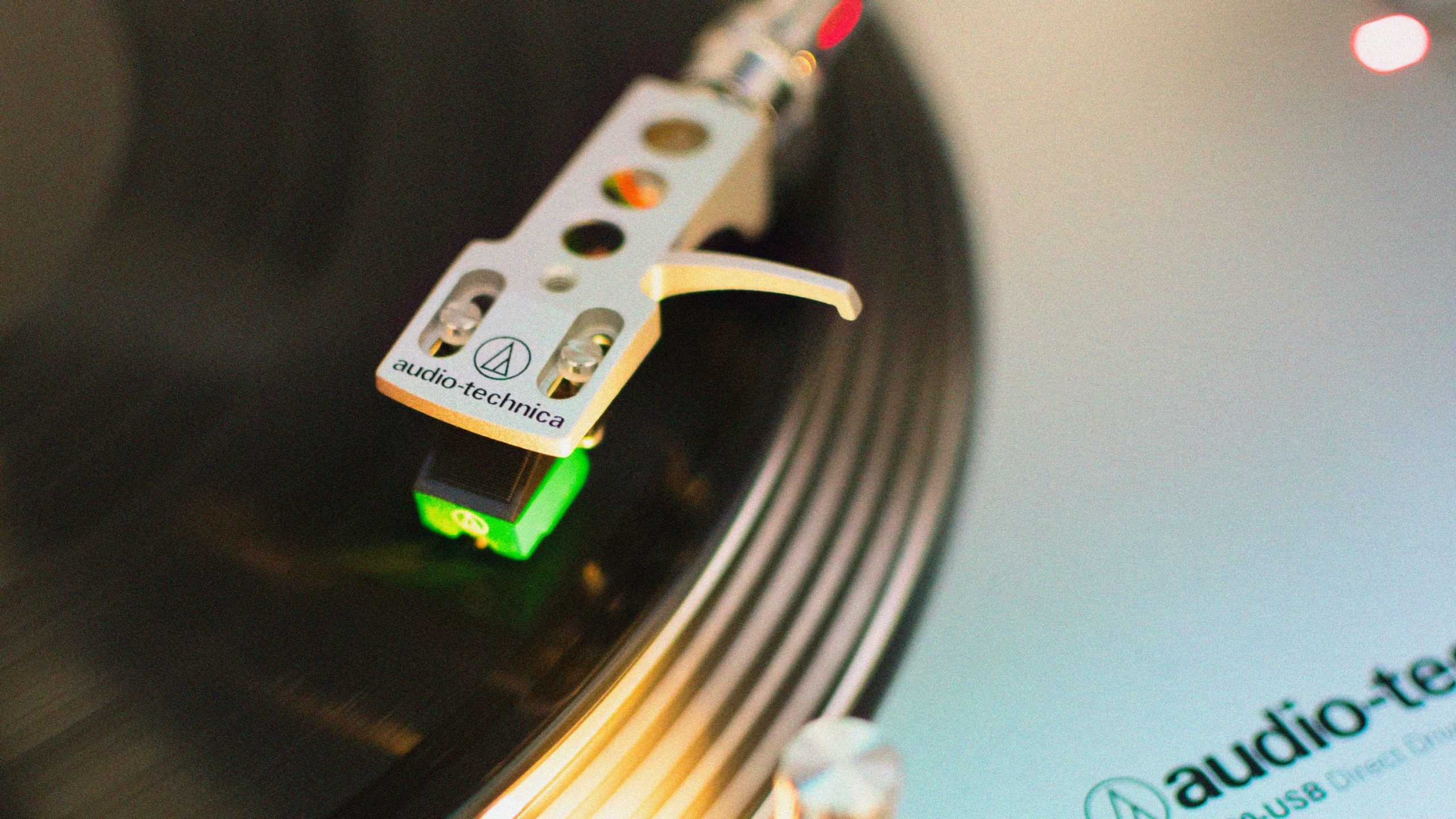
Going back to my anecdote, I ruined Morrison Hotel because I wasn’t ready to handle a manual tonearm when I was little. As a result, the whole cartridge and the record needed to be replaced (last reference, I promise).
So if you don’t want to scratch your records or break your stylus, you might want to go for turntable with a semi-automatic or fully automatic tonearm that will do the delicate work for you.
But this is all up to you. Do you want that old-school authenticity or modern convenience? Or Both?
The Motor
The “motor”, the part that spins the record, comes in two different types: “direct drive” and “belt drive”.
Direct driver turntables are the go-to for D.J.s and mixers, for their precision, speed and ability so spin freely when turned off, allowing them to scratch to their heart’s content.
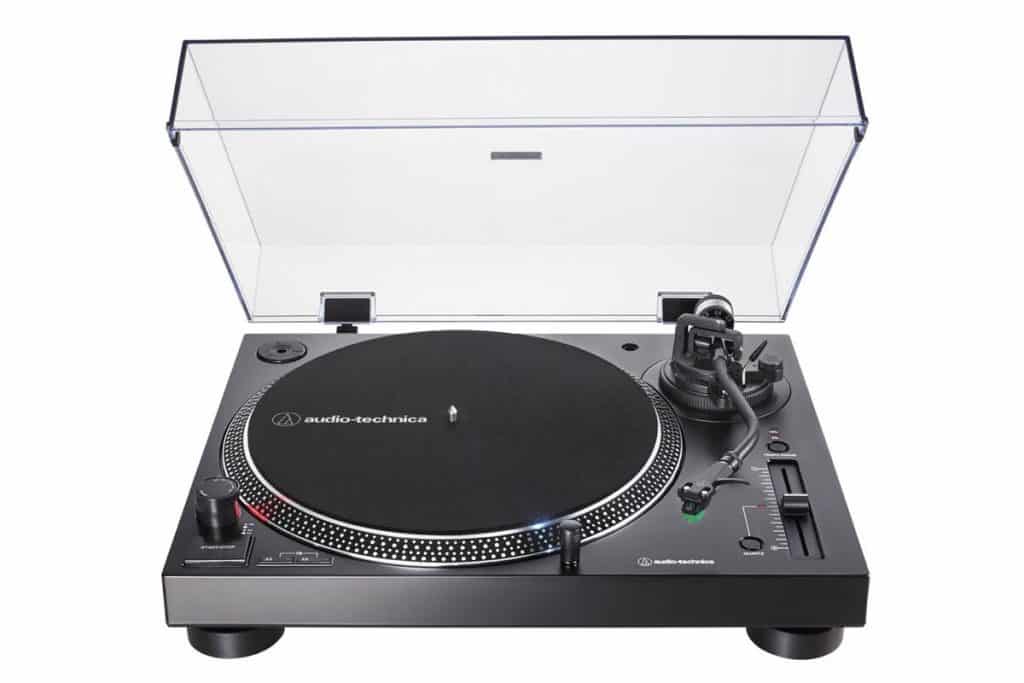
But among vinyl collectors, belt drive turntables are slightly more common. They are a more traditional method of playing records, and many audiophiles believe, allows the music to be better heard, since the subtle sound of the motor is not picked up by the stylus as much. Again, this is about personal preference.
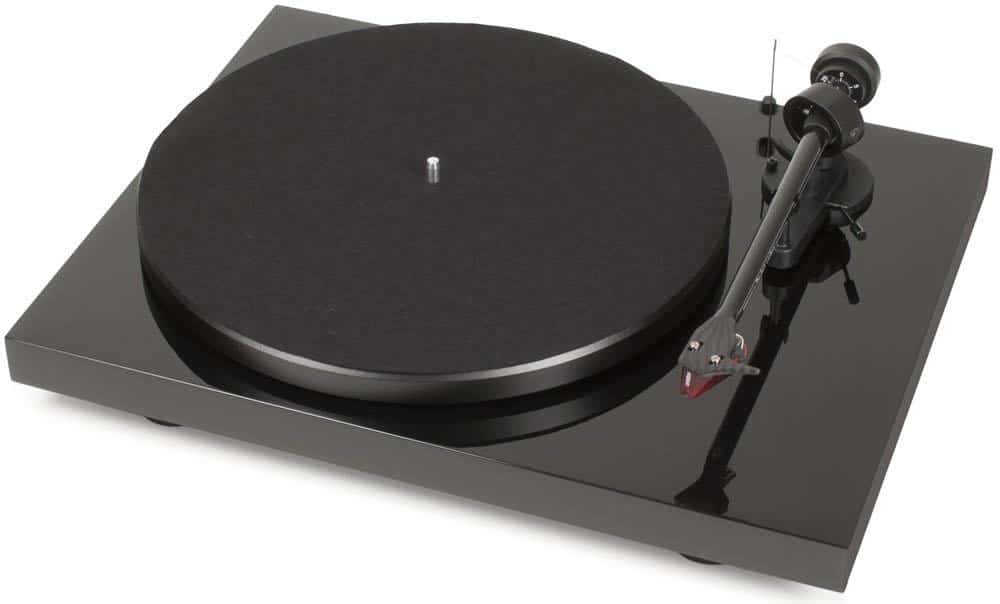
Other Important Terms To Know
So, with all that in mind, you probably think you’re just about ready to get buying. There are a few more useful things to know first though…
USB , RPM, Signal to noise ratio and “wow and flutter”.
USB Ports
USB (universal serial bus) ports are getting more and more common in modern turntables. If you’d like to make copies of your vinyl to store on your phone and take with you, or archive your tunes digitally, try to find a player with a USB port.
33, 45 and 78 RPM
RPM (revolutions per minute) is how fast your turntable will spin. Most come with 33 1/3 and 45 R.P.M capabilities, which are the two common speeds.
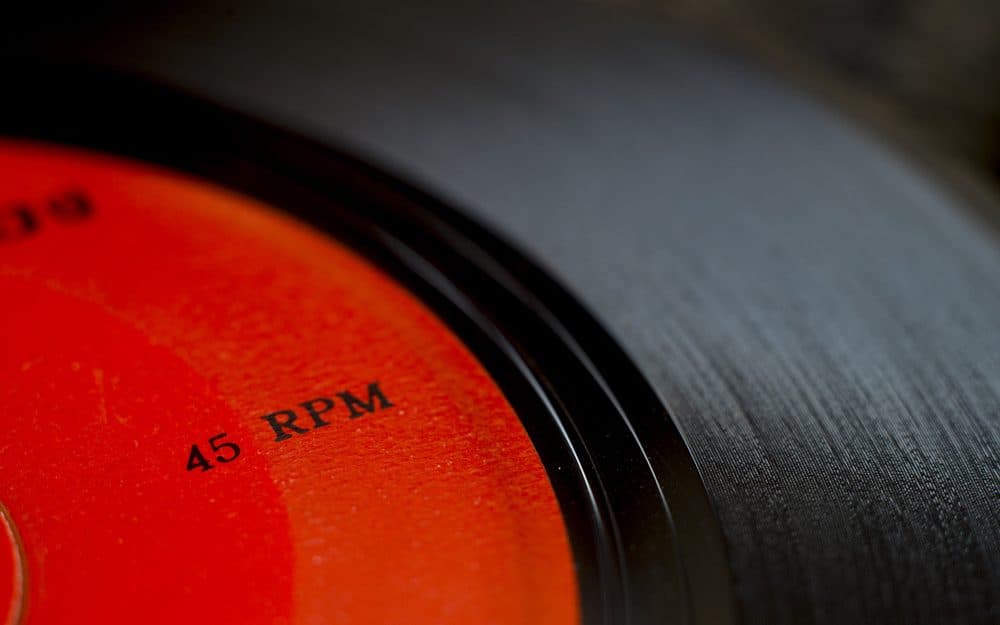
You don’t want to make Motörhead sound like Alvin and the Chipmunks, so make sure you match the turntable’s speed setting with the record you’re playing. The sticker in the middle of the record will tell you the right speed. Look for a little 33 or 45.
Note that there are also 78 rpm records, which were the standard a long time ago, but only a few turntables support this uncommon speed these days.
Signal To Noise Ratio (SNR)
Signal to noise ratio is an indication of how much background noise you will hear when playing your record. You want to look for a higher signal to noise ratio, though this is just one part of the sound quality equation. I’d recommend a value above 65db (decibels). You want clear audio, not fuzzy buzzing.
Wow and Flutter
“Wow and Flutter”, no not flying mounts in World of Warcraft, but a measurement of how accurately the motor spins the platter. The last thing you want is a wobbly turntable that spins off axis. Again, you want clear music without a weird wavey sound in the background. The lower the better with this spec, 0.25% or below if you can.
Well, that about wraps it up…
I hope my guide has helped you in your search for your first, or twenty-first record player, reader. There are many websites dedicated to this ever so prestigious hobby out there, so if anything here is unclear, simply type some keywords into your favourite search engine.
I’ve kept things quite simple as the world of vinyl can be incredibly complicated. This guide goes into a lot more detail than I have about the technical details, and offers some first-rate advice on setting them up, if you’re interested. It helped me a lot!
Written by A T Quinn

